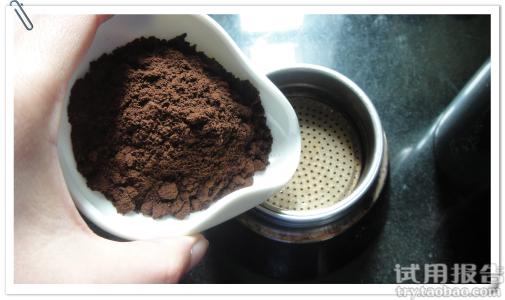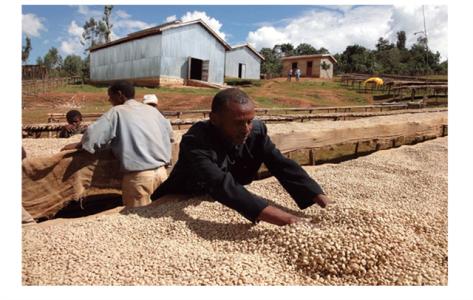Introduction to the characteristics, taste and acidity of Indonesian gold Mantenin coffee beans roasted in medium and deep depth
Manning needs to screen the defective beans layer by layer, and the probability of defective beans is too high. Coupled with the ugly appearance, sometimes good beans look like defective beans.
1. Deep baking (Fullcity) in conventional baking degree: rich and mellow, bitterness is obvious, chocolate and slight sweetness are more prominent, licorice is obvious, fruit acidity is weak, smooth feeling is general, strong aroma but poor richness.
two。 Moderate baking (City): the sense of balance is very good, the yellow man under this baking degree can be said to be a little less MAN, but a little more soft, the taste is purer than medium-deep baking, but the mellow feeling is still good, the smooth feeling is obviously better than medium-deep baking, the bitterness still belongs to a more prominent range, but it is obviously weaker than medium-deep baking, and the sense of fruit acidity is obviously improved. If you are a friend who cannot accept the obvious acidity in coffee, the yellow man of this baking degree should no longer belong to your dish.
Mandailing is neither the name of the Indonesian place name, the name of the producing area, the name of the port, nor the name of the coffee variety, but the mispronunciation of Mandaline, a nation that used to live in Sumatra. During World War II, a Japanese soldier was drinking coffee in Sibolga, central Tapanuli, Indonesia. When he asked the shopkeeper what kind of coffee he was drinking, the boss thought he was from, so he replied "Mandailing". When the Japanese soldier returned home after the war, he remembered that the coffee with a special flavor at that time seemed to be called "Mantenin." in 1968, Nomura Trading Company in Osaka, Japan visited the Indonesian company N. V. Pawani Medan, imported 15000 kilograms of Sumatra mantenin coffee, and was very popular after it was put on the Japanese market. since then, Mantenin Coffee and Pwangni Coffee Company have gained great fame.
It is customary to call coffee from Sumatra Mantenin, which is neither scientific nor confusing. The coffee produced by the Batak people in Lake Toba or the Lindong Mountains in north-central Sumatra is mostly grown without shade, and is mainly treated by half-sun or sun treatment, with obvious herbal and soil flavor, low acidity and muggy aroma, which is the most important feature of Mantenin coffee, so it is called Mantenin coffee. In the northernmost area of Sumatra, Tawahu or Achelle is planted by another Gaga friend in the traditional shade method, which is mainly washed or semi-washed, with a bright sour flavor and a light fragrance tone. American boutique coffee industry mostly calls this area coffee Axie Coffee, Gayoushan Coffee or Tawahu Coffee.

Important Notice :
前街咖啡 FrontStreet Coffee has moved to new addredd:
FrontStreet Coffee Address: 315,Donghua East Road,GuangZhou
Tel:020 38364473
- Prev

The flavor of Kenya's Kam Chu Valley coffee beans with strong fruit acids Description
Kenyan Coffee Bean The Kenyan government takes the coffee industry extremely seriously, and it is illegal to cut down or ring coffee trees here. Kenya's coffee buyers are world-class buyers of premium coffee, and no country grows, produces and sells coffee as consistently as Kenya. All coffee beans
- Next

Introduction to the proportion of Nicaraguan coffee hand-flushed powder taste acidity
Nicaraguan coffee hand flushing step powder taste acidity introduction bourbon species is a branch of a tree species Arabica, in addition to yellow bourbon, there are red bourbon, orange bourbon, etc. (in addition to Kaddura, Kaduai, etc.) of which bourbon species were first planted in Bourbon Island and Ethiopia, about 800-1900 meters above sea level are more suitable for the growth of bourbon coffee beans.
Related
- Detailed explanation of Jadeite planting Land in Panamanian Jadeite Manor introduction to the grading system of Jadeite competitive bidding, Red bid, Green bid and Rose Summer
- Story of Coffee planting in Brenka region of Costa Rica Stonehenge Manor anaerobic heavy honey treatment of flavor mouth
- What's on the barrel of Blue Mountain Coffee beans?
- Can American coffee also pull flowers? How to use hot American style to pull out a good-looking pattern?
- Can you make a cold extract with coffee beans? What is the right proportion for cold-extracted coffee formula?
- Indonesian PWN Gold Mandrine Coffee Origin Features Flavor How to Chong? Mandolin coffee is American.
- A brief introduction to the flavor characteristics of Brazilian yellow bourbon coffee beans
- What is the effect of different water quality on the flavor of cold-extracted coffee? What kind of water is best for brewing coffee?
- Why do you think of Rose Summer whenever you mention Panamanian coffee?
- Introduction to the characteristics of authentic blue mountain coffee bean producing areas? What is the CIB Coffee Authority in Jamaica?

